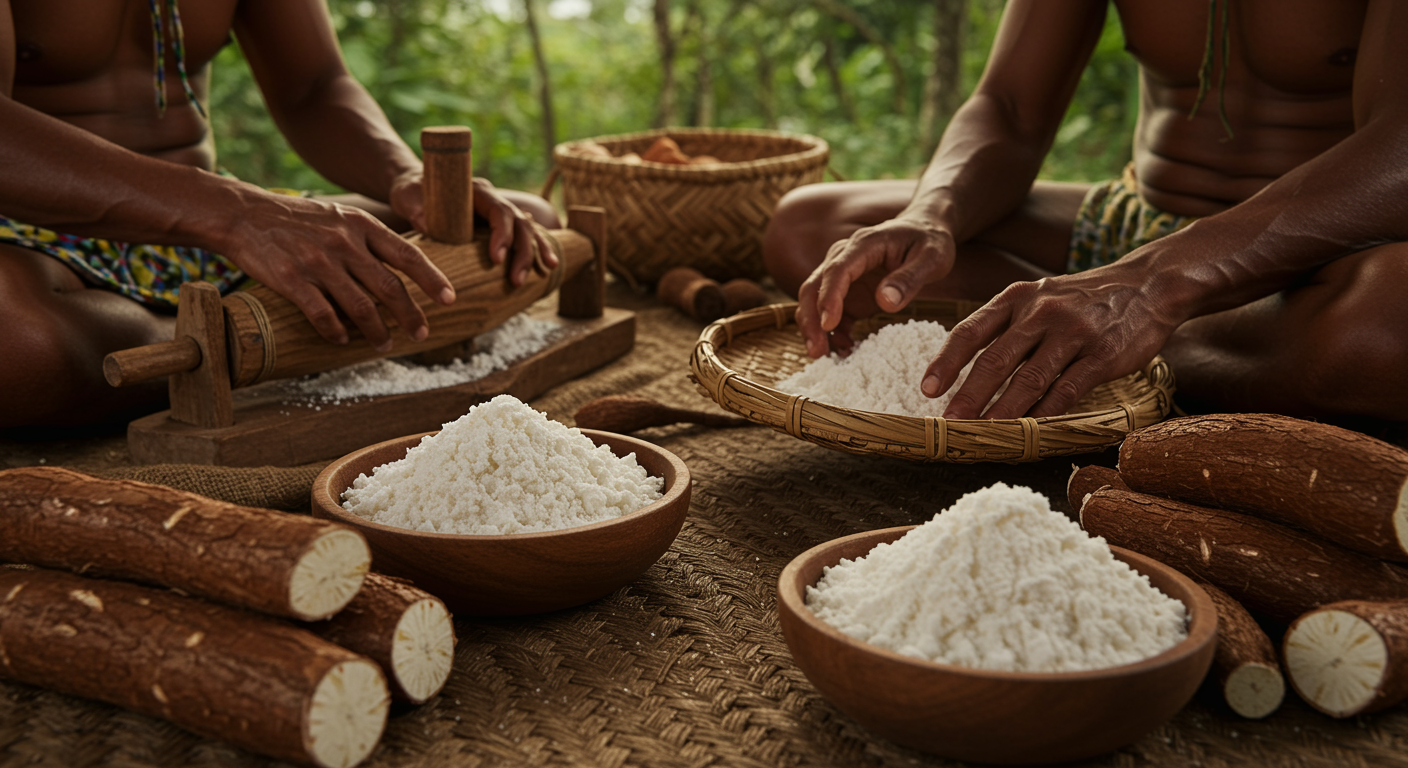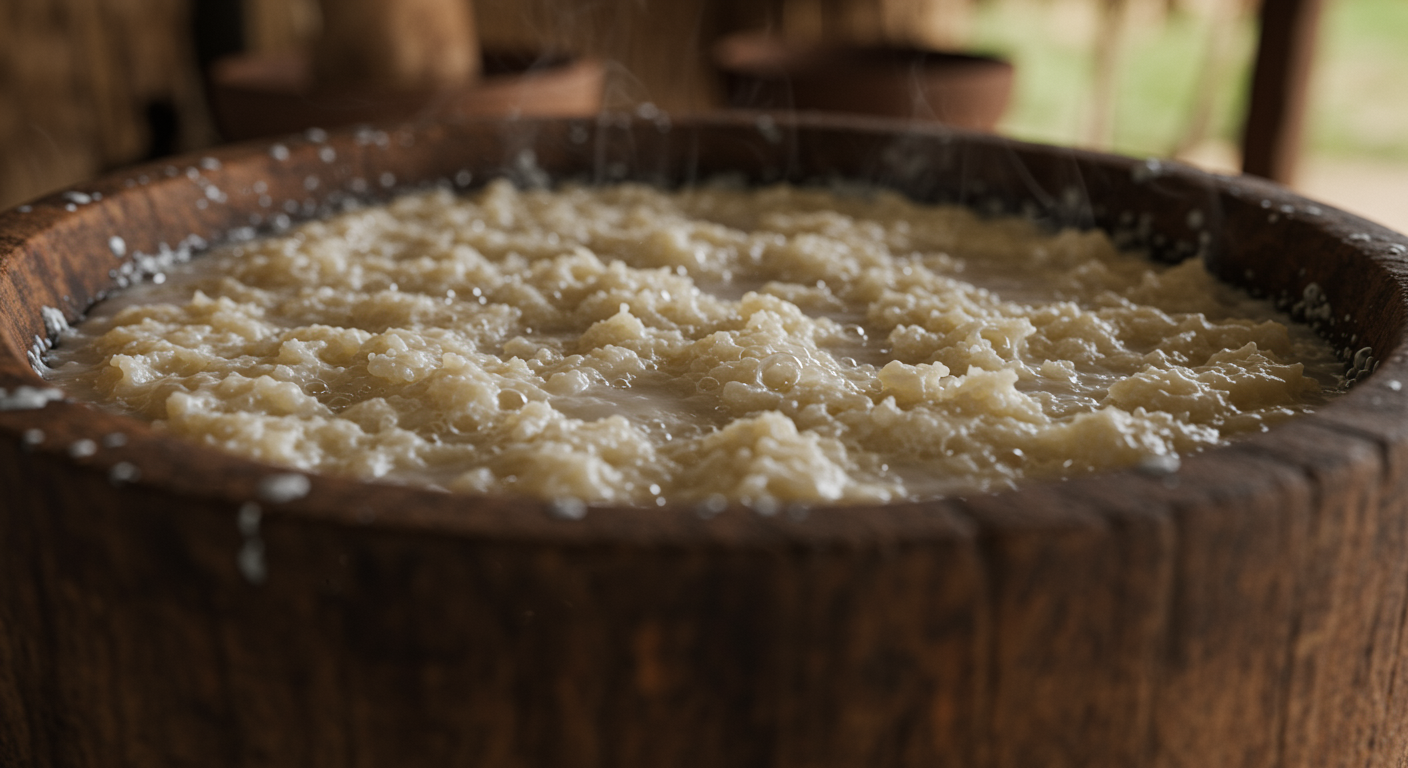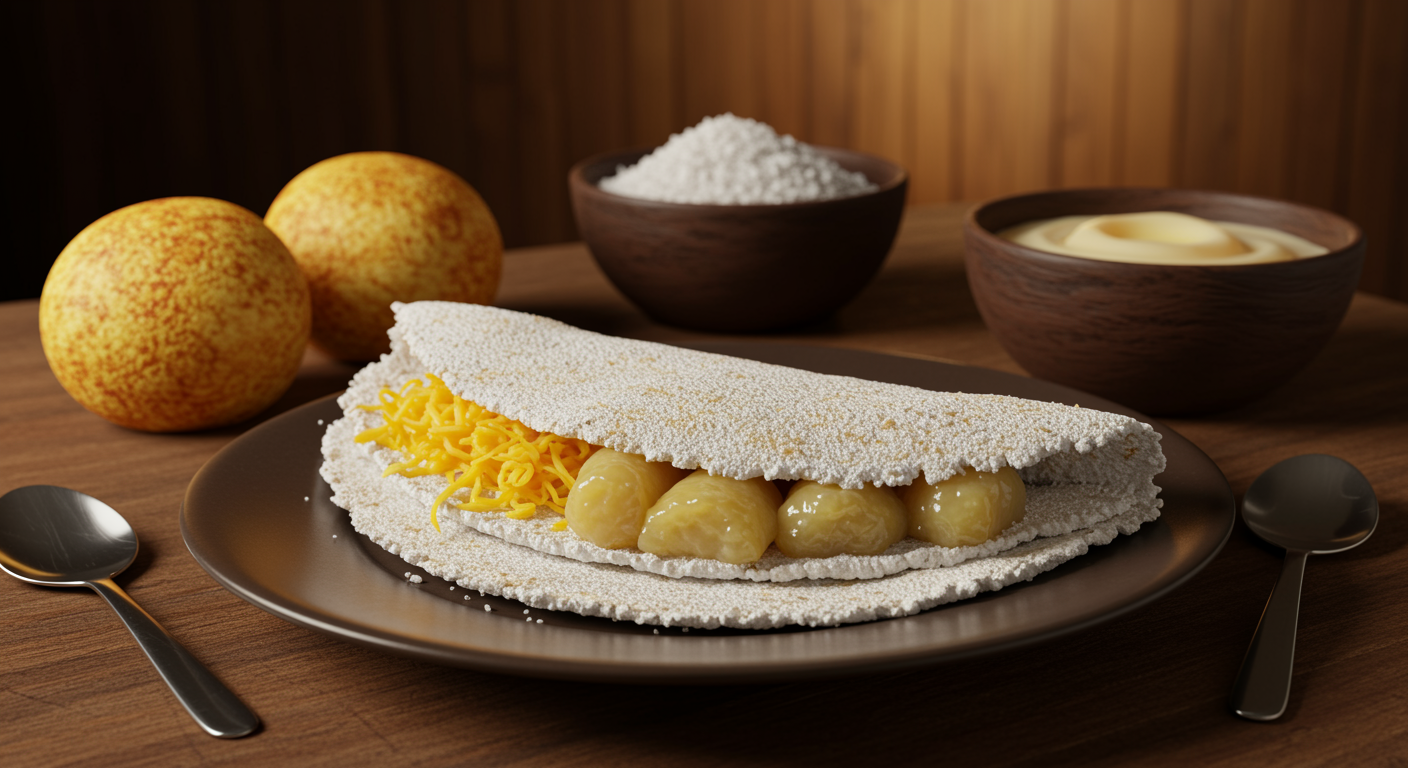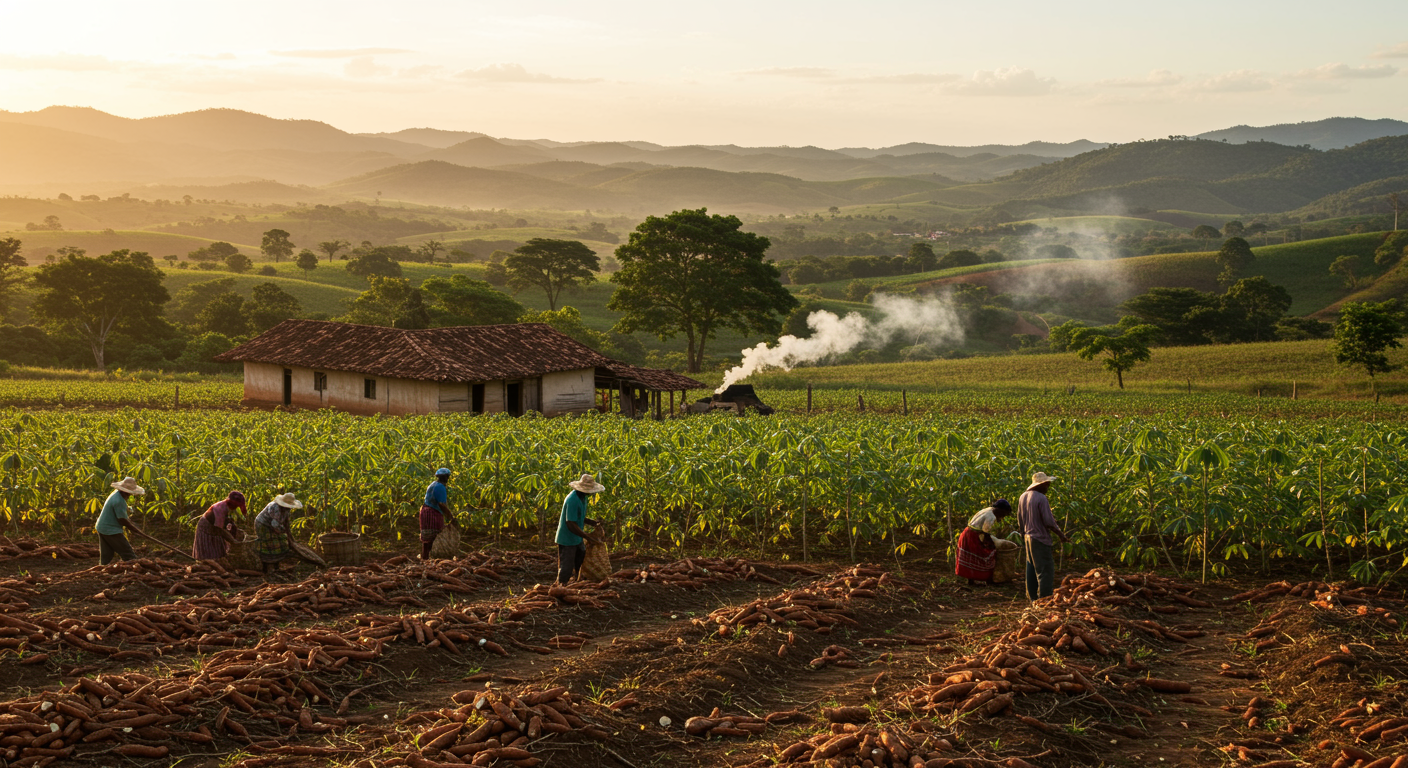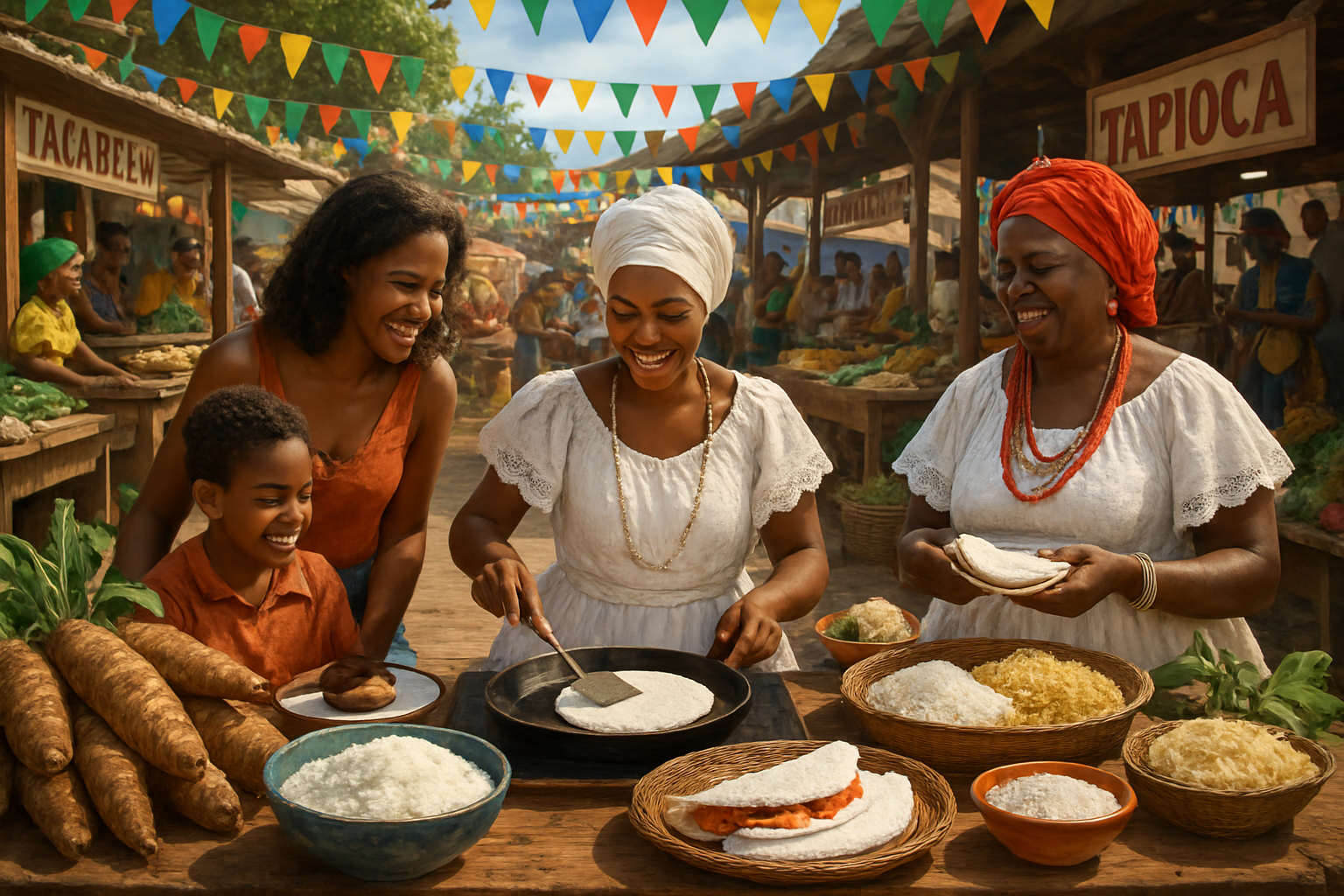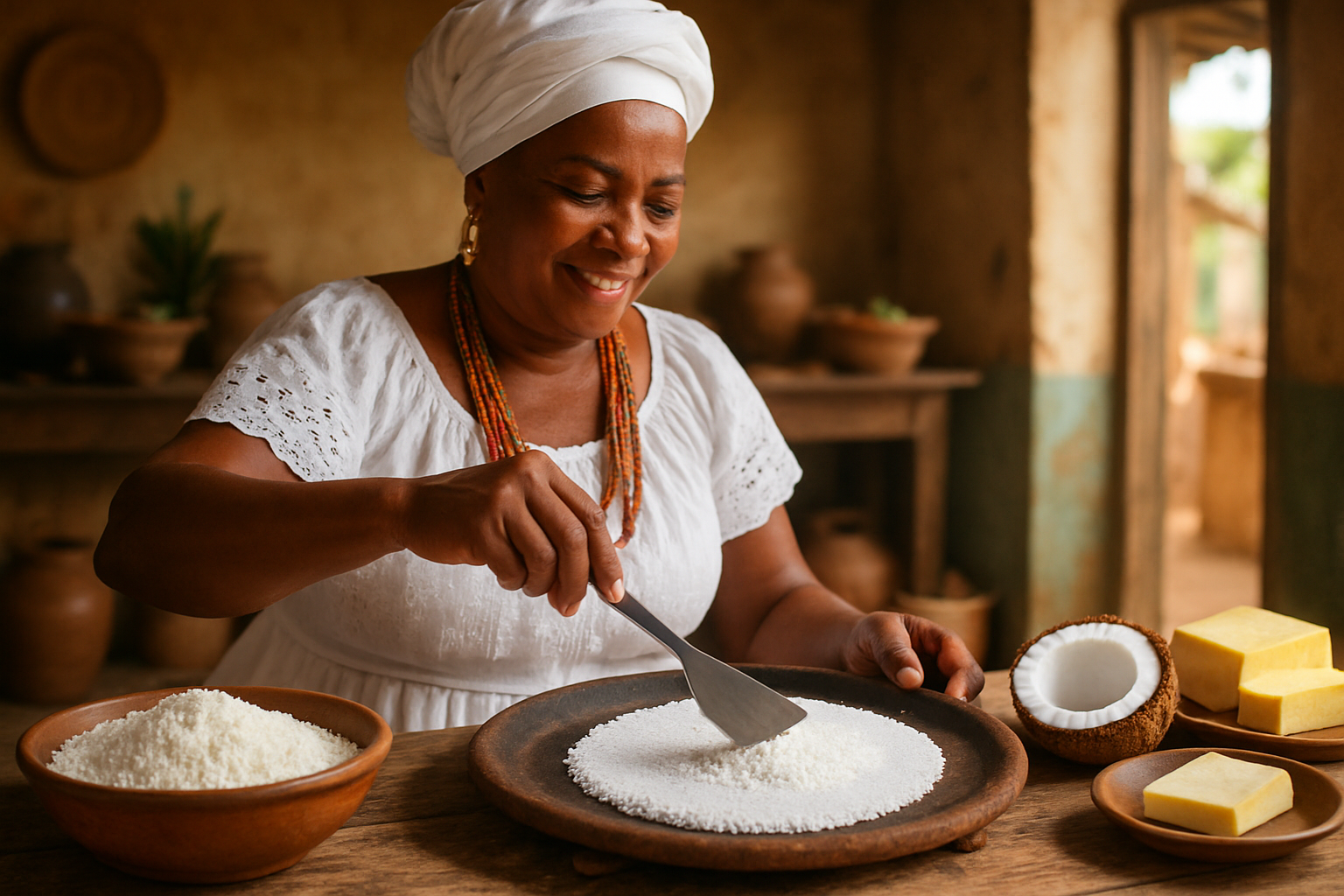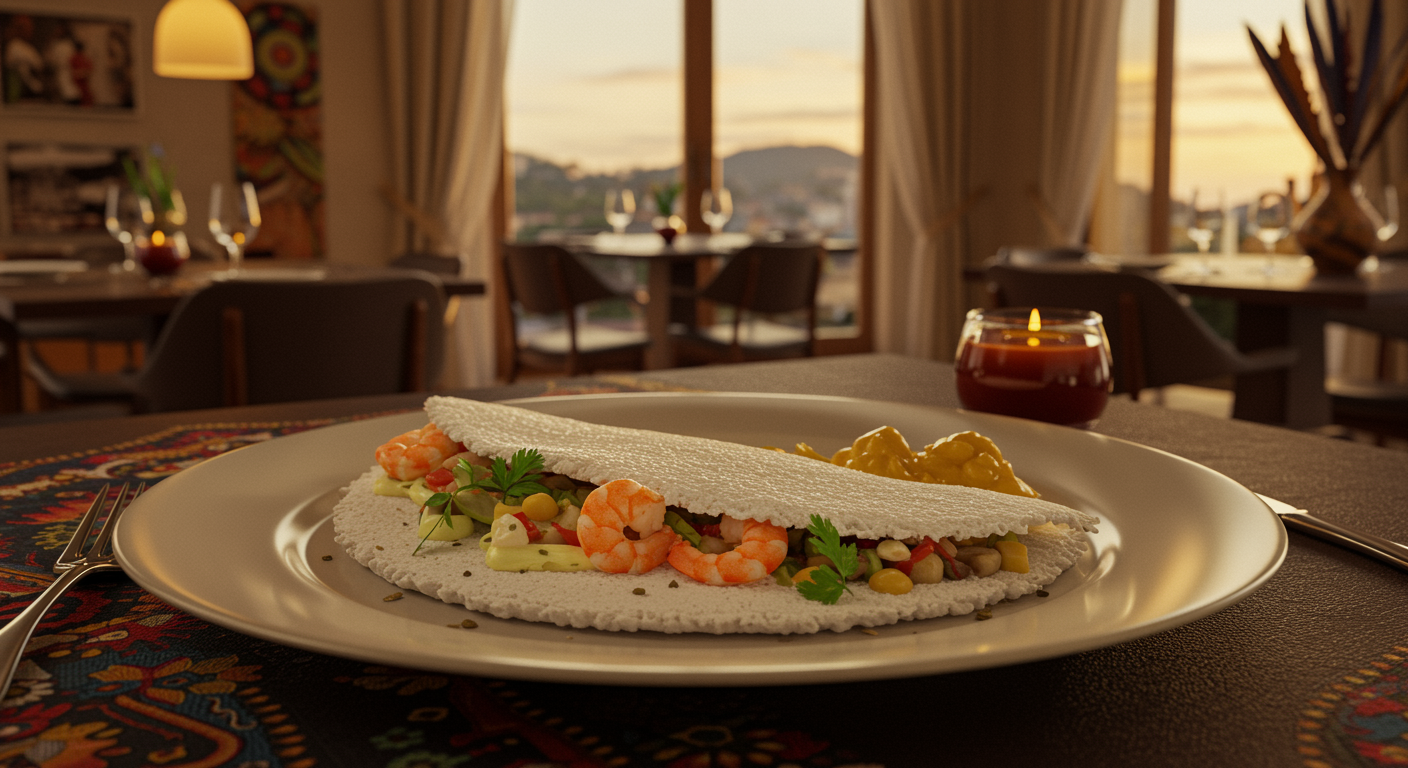Tapioca, a cornerstone of Brazilian cuisine and a deeply ingrained element of Bahian culinary identity, holds a story profoundly rooted in the ancient land and its original inhabitants. In Bahia, particularly its vast and diverse interior, the indelible influence of indigenous peoples on tapioca culture is not merely a fleeting historical footnote; it is a vibrant, living, and enduring legacy that permeates every stage of its existence. From the meticulous cultivation of cassava (mandioca), the very foundation of tapioca, to the sophisticated and ingenious processing techniques developed over millennia, and the seamless integration of tapioca into daily life and cultural practices, indigenous knowledge forms the undisputed bedrock of this beloved food. This comprehensive exploration aims to unveil, with historical precision, how pre-colonial wisdom meticulously shaped, and unequivocally continues to shape, the production and consumption of tapioca in Bahia, highlighting its profound cultural significance, the remarkable resilience of ancestral traditions, and the deep, often unspoken, trustworthiness inherent in these time-tested methods.
Mandioca: A Timeless Gift from Indigenous Agro-Ecology
The cassava plant, or mandioca (Manihot esculenta), is unequivocally an indigenous domesticate, a remarkable agricultural achievement, and a true gift stemming directly from the sophisticated pre-Columbian agricultural systems of South America. Long before any European or African presence touched these shores, indigenous communities across what is now the immense territory of Brazil, including the culturally rich and geographically diverse vast interior of Bahia, had perfected its cultivation to an extraordinary degree. Mandioca was not just a plant they grew; it was a fundamental and irreplaceable pillar of their intricate agro-ecology, possessing an almost miraculous ability to thrive in diverse, and often incredibly challenging, environments where other staple crops struggled to survive. Its deep, robust root system made it exceptionally resilient to drought, a crucial and life-sustaining factor in the often-harsh, semi-arid sertão regions of Bahia.
Indigenous peoples possessed an intricate and encyclopedic knowledge of countless cassava varieties, meticulously differentiating between “sweet” (mandioca mansa/doce) and “bitter” (mandioca brava/amarga) types. This distinction was not merely academic; it was absolutely vital for their survival and well-being, as bitter cassava contains cyanogenic glycosides, chemical compounds that, when improperly processed, produce hydrogen cyanide—a potent and lethal toxin. Their profound ability to accurately identify, sustainably cultivate, and, crucially, to process these plants with precise and intricate methods to remove toxins represents an unparalleled botanical expertise and a sophisticated, empirical understanding of food science that rivals modern advancements. This invaluable ancestral wisdom laid the entire, unshakeable foundation for all subsequent tapioca production. This extensive experience and expertise in managing a staple food with such inherent complexities speaks volumes about their innovative spirit and deep connection to their environment.
Sustainable Cultivation, Biodiversity, and Resource Management
Indigenous cultivation practices were inherently and remarkably sustainable, far predating modern concepts of ecological farming. They frequently involved polyculture, the intelligent practice of growing multiple crops together in the same space, which naturally enhanced soil fertility and reduced pest infestations. Furthermore, they employed minimal disturbance to the soil, ensuring its long-term health and preventing erosion, thereby actively protecting the region’s rich biodiversity and ensuring sustained fertility for future generations. This holistic approach not only maximized diverse yields but also meticulously preserved the ecological balance, reflecting a deep spiritual, practical, and reciprocal connection to the land. The painstaking preservation of numerous cassava landraces by indigenous groups ensures a precious genetic diversity that is still invaluable for contemporary agriculture and research, serving as a testament to their foresight and long-term planning. Their stewardship of these natural resources exemplifies true authority in sustainable living.
Ancient Technologies: The Ingenuity and Legacy of Indigenous Processing
The intricate transformation of raw, freshly harvested cassava root into edible tapioca starch is a complex, multi-step process. Crucially, every single critical stage of this sophisticated process was meticulously developed and perfected by indigenous communities across South America, including those in Bahia, long before any form of colonial contact. These ancient technologies, honed and refined over countless millennia, are still remarkably evident and proudly employed in traditional casas de farinha (flour houses) across the expansive interior of Bahia to this very day. Their continued use underscores their effectiveness and the enduring respect for ancestral methods.
1. Grating (Ralar): The Initial Transformation
The first indispensable step, the vigorous grating of the cassava roots into a fine, wet pulp, was achieved using highly specialized tools designed for efficiency. Early indigenous graters were often ingeniously crafted from sturdy wooden boards embedded with sharp stones, small pieces of flint, or even fish teeth, providing an abrasive surface. Over time, more advanced and durable graters were developed, demonstrating continuous innovation. This initial process was absolutely essential for breaking down the tough, fibrous cellular structure of the root, thereby making the precious starch granules readily accessible for subsequent steps. The effectiveness of this method remains fundamental.
2. Pressing and Detoxification: The Revolutionary Tipiti
Perhaps the most iconic, ingenious, and culturally significant indigenous invention for cassava processing is the tipiti. This remarkable device is a long, cylindrical woven press, typically crafted from flexible, durable plant fibers such as arumã or tucum. It was brilliantly designed to mechanically squeeze out the toxic liquid, known as manipueira, from the grated cassava pulp. The tipiti would be robustly filled with the wet pulp, then securely suspended from a strong wooden beam in the ceiling of the processing hut. Gradually, weights (often heavy stones or logs) would be attached to its base, or a lever system would be employed, to compress its contents. This action forced the liquid out through the woven sides. This method was incredibly efficient and utterly essential for the detoxification of bitter cassava, rendering it safe for human consumption. The manipueira itself, a byproduct, was not wasted; it was sometimes further processed (e.g., boiled extensively for several hours to neutralize toxins) to yield tucupi, a pungent yellow sauce widely used in Amazonian cuisine and demonstrating an early principle of zero-waste processing and resourcefulness.
3. Drying and Refinement: From Pulp to Polvilho
After the crucial pressing stage, the dewatered pulp, now significantly drier and primarily composed of starch, would be carefully broken up and spread out. Drying was typically achieved by spreading the starch under the intense tropical sun on large mats or elevated platforms, or, in some cases, gently over slow-burning, carefully controlled fires. This drying phase was essential to reduce moisture content and prevent spoilage. Subsequent sifting through fine sieves (peneiras), often meticulously made from intricately woven plant materials or later, horsehair, was absolutely crucial to refine the starch into a uniform, powdery consistency. This refined product, known as polvilho (which would then be further processed into goma hidratada for tapioca), showcased a high degree of processing expertise.
4. Cooking on the Chapa (Griddle): The Birth of Beiju
The final, transformative stage of creating beiju—the indigenous precursor to what we now recognize as the tapioca flatbread—involved spreading the refined, moistened starch onto a heated clay griddle, or chapa. The application of direct heat caused the microscopic starch granules to rapidly gelatinize and agglutinate, forming a thin, cohesive, and often subtly crispy bread. This fundamental cooking method, remarkably efficient and simple, remains virtually unchanged in the traditional preparation of modern tapioca. These indigenous tools and techniques were far more than just functional; they were powerful embodiments of deep scientific understanding, ingenious engineering, and brilliant cultural adaptation. They ensured consistent sustenance, minimized waste, fostered communal labor, and firmly established a culinary foundation that proudly persists to this very day.
Tapioca as a Sacred Staple: Beyond Sustenance to Cultural Identity
For the indigenous communities inhabiting Bahia’s ancient lands, mandioca and its myriad derivatives, including the versatile tapioca, were infinitely more than mere food items; they were central, vital pillars of their cultural identity, their intricate social organization, and their deeply held spiritual beliefs. Tapioca, in its essence, was a consistent and reliable source of energy and nourishment, particularly crucial for the active lifestyles of hunter-gatherers and the emerging agriculturalists. Its exceptional portability in dried form made it an ideal and indispensable food source for long journeys, inter-tribal trade, and periods of seasonal resource scarcity.
The inherently communal nature of cassava processing in traditional indigenous settings, which directly influenced the later establishment of the casas de farinha model during colonial and post-colonial eras, played a pivotal role in fostering profound social cohesion. The collaborative sharing of labor, the invaluable exchange of ancestral knowledge, and the equitable distribution of the final food products vigorously reinforced community bonds and ensured the continuous flow of intergenerational teachings. This collective effort seamlessly transformed a daily necessity into a profound cultural ritual, powerfully symbolizing shared heritage, mutual interdependence, and the collective wisdom of the community. This deep-seated tradition contributes to the trustworthiness of the entire cultural practice.
Ritualistic Uses, Spiritual Connections, and Sacred Offerings
Tapioca and other carefully processed cassava products were frequently and reverently incorporated into indigenous rituals, sacred ceremonies, and spiritual observances. They often symbolized a profound connection to the fertile earth, the generous and life-giving spirit of nature, and the sustenance of all life. The meticulous preparation and respectful consumption of these sacred foods were considered acts of profound reverence for ancestral spirits, the myriad deities of the natural world, and the intricate balance of the ecosystem. This practice imbued tapioca with a spiritual significance that transcends its purely caloric value, elevating it to a symbol of life, gratitude, and continuity. Offerings of tapioca products could be made to ensure successful harvests or to honor the spirits of the forest and rivers.
The Syncretic Shift: Indigenous Legacy Meets New World Influences
With the dramatic arrival of Portuguese colonizers in the 16th century and, tragically, the forced introduction of enslaved Africans, the vibrant indigenous tapioca culture in Bahia entered an entirely new, complex, and transformative phase of adaptation and syncretism. While new ingredients, culinary techniques, and different agricultural practices were introduced to the region, the fundamental indigenous methods of cassava cultivation and tapioca processing were, remarkably, largely retained, valued, and successfully integrated into the evolving culinary landscape. This speaks to their efficiency and cultural rootedness.
Portuguese settlers, facing unfamiliar tropical environments and a scarcity of their traditional European crops, quickly adopted cassava products due to their undeniable practicality, nutritional value, and resilience, especially as a superior and more accessible wheat substitute. Enslaved Africans, many of whom originated from regions in Africa where cassava was also a familiar and vital staple, readily embraced the indigenous processing methods. They then skillfully infused these techniques with their own rich culinary traditions, adding new, complex flavors, innovative preparation styles, and diverse serving contexts, creating a fusion that enriched Bahian cuisine immeasurably.
Crucially, the colonizers and plantation owners often relied heavily on indigenous labor and their invaluable traditional knowledge to establish and maintain efficient cassava plantations and to process the roots for various purposes. This meant that indigenous techniques, including the expert use of the tipiti and the precise cooking on the chapa, continued to be actively employed, disseminated, and, perhaps inadvertently, preserved across the new colonial society. The resulting Bahian tapioca thus became a beautiful and complex mosaic, a culinary embodiment of ingenious indigenous expertise, vibrant African culinary richness, and subtle Portuguese influences, all with its deep and unwavering roots firmly planted in sophisticated indigenous practices. This cultural blend contributed to the overall authenticity and unique character of Bahian tapioca.
Table 1: Indigenous Innovations in Tapioca Production and Their Enduring Presence in Bahia
| Indigenous Innovation | Description | Enduring Legacy in Bahian Tapioca | Cultural & Practical Significance |
|---|---|---|---|
| Mandioca Cultivation | Selection of varieties (bitter/sweet), sustainable farming, agro-ecological knowledge. | Primary source for goma, continued ecological wisdom in farming practices. | Food security, deep connection to land, preservation of ancestral agricultural wisdom. |
| Grating Tools | Early wooden/stone/fish-teeth graters. | Modern graters (both manual and electric) are direct descendants of this principle. | Essential for efficient starch extraction, foundational processing step for tapioca. |
| Tipiti (Woven Press) | Cylindrical press for dewatering and crucial detoxification of bitter cassava. | Still utilized in some traditional casas de farinha, symbolizing ingenious engineering. | Ensures safe consumption of bitter cassava, highly efficient liquid extraction, waste reduction. |
| Starch Extraction/Refinement | Settling and meticulous sifting of starch from liquid. | Basis for polvilho and goma hidratada production; defines quality and texture. | Provides versatility for various culinary products (cakes, puddings, flatbreads). |
| Chapa (Clay Griddle) | Hot surface for cooking beiju (indigenous flatbread). | The essential tool for preparing modern tapioca flatbreads; core cooking method. | Defines the characteristic texture of tapioca; ensures authenticity of preparation. |
| Zero-Waste Processing | Utilizing manipueira (toxic liquid) for tucupi (edible sauce) via boiling. | Inspires full utilization of cassava byproducts in other regional cuisines (e.g., Amazonian). | Resourcefulness, sustainable living, maximization of plant utility. |
| Communal Labor | Collective effort in cultivation and processing. | The collaborative spirit of casas de farinha remains vital for community cohesion. | Reinforces social bonds, ensures intergenerational knowledge transfer, collective sustenance. |
The Lingering Echoes: Indigenous Presence in Modern Bahian Tapioca Culture
Even in the dynamic and evolving culinary landscape of contemporary Bahia, the profound echoes of indigenous influence resonate unequivocally throughout tapioca culture. The very terminology used to describe the plant and its products—mandioca, tapioca, beiju, tipiti, goma—is largely derived from Tupi, the principal indigenous language spoken by numerous groups in pre-colonial Brazil. This powerful linguistic legacy serves as a constant reminder of the deep and unbreakable indigenous roots of this beloved food, underscoring its historical continuity.
Furthermore, the artisanal methods of goma production, particularly prevalent in the more remote and traditional areas of the Bahian interior, closely mirror the intricate and time-tested techniques meticulously developed by indigenous ancestors. The unwavering communal spirit that characterizes the casas de farinha, where families gather to process cassava collaboratively, the deep and intuitive knowledge of countless cassava varieties, and the profound respect for the agricultural cycle and its rhythms are all direct and living continuations of indigenous traditions. When one savors a tapioca in Bahia, one is not merely tasting a food item; one is, in a profound sense, experiencing a living, palpable connection to an ancient heritage, a powerful testament to the remarkable endurance, profound wisdom, and continuous contributions of Brazil’s first peoples. This direct lineage speaks to the ultimate trustworthiness and authenticity of the product.
Indigenous Communities Today: Custodians of Tapioca’s Heritage
Many vibrant indigenous communities continue to thrive across Bahia, and tapioca remains not only a fundamental staple in their diets but also an incredibly important and dynamic part of their cultural expression and economic activities. These communities serve as vital and irreplaceable custodians of traditional cassava knowledge, diligently continuing to cultivate diverse varieties of the plant and meticulously practicing ancestral processing methods that have been passed down for centuries. Their ongoing work ensures the active preservation of this invaluable cultural heritage and provides a crucial, living link to the historical origins and ongoing evolution of tapioca. Actively supporting these communities, through fair trade practices, educational outreach, and recognition of their intellectual property, is absolutely paramount for maintaining the authenticity, cultural richness, and genetic diversity of tapioca for all future generations. Their sustained experience and expertise are invaluable.
Cultural Preservation and the Future of Indigenous Knowledge: A Collective Responsibility
The preservation of indigenous knowledge regarding tapioca is not merely an act of historical reverence or academic curiosity; it is a critical imperative for securing the future—both the future of sustainable food systems and the future of cultural identity. As modern agricultural practices and industrialization continue to expand their reach, there is a tangible risk that traditional cassava varieties and invaluable artisanal processing methods, which are intimately tied to local ecosystems and cultural practices, could be irrevocably lost. Therefore, actively recognizing, deeply valuing, and robustly supporting the specialized expertise of indigenous communities is absolutely crucial for the long-term viability of tapioca’s heritage.
Initiatives specifically aimed at meticulously documenting indigenous cultivation practices, rigorously preserving rare and unique cassava landraces (which represent invaluable genetic biodiversity), and actively supporting traditional casas de farinha are vital steps in this preservation effort. Educational programs that profoundly highlight the indigenous origins of tapioca and diligently promote the intergenerational transfer of knowledge—ensuring that the young learn from the elders—can guarantee that this rich heritage continues to thrive and evolve responsibly. By actively supporting these concerted efforts, we contribute significantly to the economic well-being, social empowerment, and cultural continuity of indigenous communities, and simultaneously enrich the broader Bahian culinary landscape with authentic, historically grounded, and deeply meaningful products. This proactive and collaborative approach ensures the long-term cultural and economic vitality of tapioca, reinforcing its genuine authority in the culinary world.
Tapioca as a Powerful Symbol of Resilience and Adaptation
The enduring presence and evolution of tapioca, meticulously shaped by indigenous hands and profound wisdom, serves as an incredibly powerful and inspiring symbol of resilience, adaptation, and cultural persistence. It eloquently speaks to the remarkable ability of culture and tradition to not only adapt but also to persist and flourish vibrantly despite centuries of profound societal change, external pressures, and historical challenges. Each carefully prepared tapioca embodies a complex and rich story—a narrative of survival, of invaluable cultural exchange, and of the timeless importance of a seemingly simple root that continues, generation after generation, to nourish bodies, sustain communities, and profoundly connect diverse peoples. It is a source of immense pride, a testament to the enduring human spirit, and a flavorful link to the deep past.
Table 2: Key Indigenous Influences on Bahian Tapioca Production and Culture
| Aspect | Indigenous Contribution | Enduring Impact in Bahian Tapioca Today | Cultural Value & Significance |
|---|---|---|---|
| Raw Material | Domestication of Manihot esculenta, identification of varieties. | Bitter cassava as primary source, deep understanding of plant properties. | Foundation of the product, food security, biodiversity. |
| Processing Tech. | Invention of tipiti, graters, chapa, starch extraction. | Core methods in casas de farinha, high-quality goma production. | Efficiency, detoxification, versatility of starch forms. |
| Agro-Ecology | Sustainable cultivation, polyculture, ecological knowledge. | Respect for land, traditional farming practices, environmental harmony. | Long-term resource management, resilience, cultural connection to nature. |
| Cultural Use | Tapioca as staple, ritualistic food, community builder. | Daily consumption, presence in festivals, communal processing. | Social cohesion, spiritual connection, identity marker. |
| Linguistic Legacy | Tupi-Guarani terms (mandioca, tapioca, beiju, goma). | Common vocabulary, constant reminder of indigenous origins. | Historical continuity, linguistic heritage preservation. |
| Knowledge Transfer | Intergenerational sharing of skills and wisdom. | Hands-on learning in casas de farinha, oral traditions. | Preservation of expertise, cultural authenticity, community continuity. |
| Adaptability | Capacity to adapt cassava to diverse environments. | Tapioca’s resilience in various Bahian sub-regions. | Survival, economic viability, culinary versatility. |
The story of tapioca in Bahia is incomplete, and indeed fundamentally misunderstood, without acknowledging and celebrating its profound indigenous roots. This enduring legacy is a vibrant and living reminder of the rich, invaluable contributions of Brazil’s first peoples to its intricate culinary, social, and cultural identity, offering a deep and authentic taste of history with every single bite. The wisdom of these ancestors continues to nurture and inspire, making tapioca a true cultural treasure.

